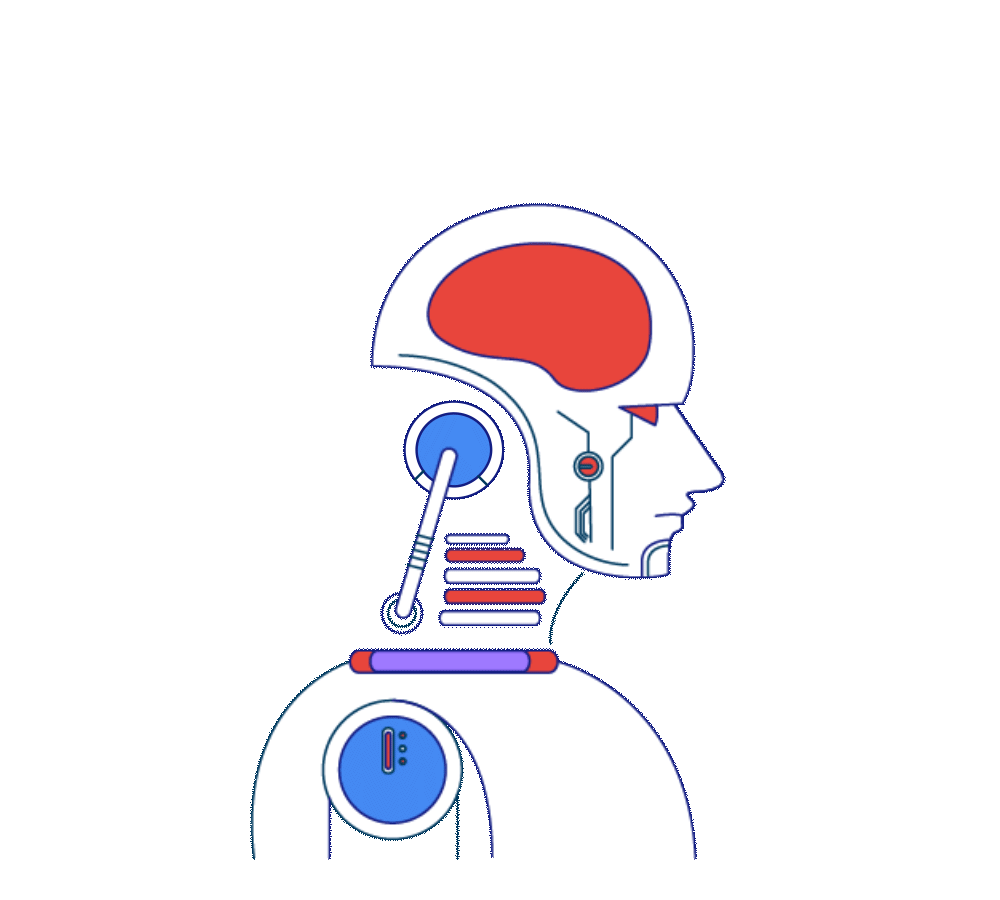Speech recognition technology allows computers to take spoken audio, interpret it and generate text from it.
Why do we need ASR
Speech recognition technology allows computers to take spoken audio, interpret it and generate text from it. But how do computers understand human speech? The short answer is…the wonder of signal processing. Speech is simply a series of sound waves created by our vocal chords when they cause air to vibrate around them. These sound waves are recorded by a microphone and then converted into an electrical signal. The signal is then processed using advanced signal processing technologies, isolating syllables and words. Over time, the computer can learn to understand speech from experience, thanks to incredible recent advances in artificial intelligence and machine learning. But signal processing is what makes it all possible.
Here at Megdap, we strive to solve this problem for all Indic languages.
Hello World of ASR
ASR or Automatic Speech Recognition is a process that takes a continuous audio speech signal and converts it into its equivalent text. This is an introductory blog around the process of performing ASR using the workflow to implement it in a Kaldi environment.
What we need:
-
-
- Lots of audio files
- All their corresponding transcripts
(Specific to Audio Input) Factors that impact a good ASR engine are:
-
-
- Volume
- Number of speakers
- Pitch
- Silences
- Word speed
- Background Noise
What we need to know to understand ASR:
I will be writing individual blogs related to the concepts explained below in the coming days.
-
-
- Bayes Theorem
- HMM
- GMM
- Basic language and phone understanding
What do we need to create an ASR Engine?
We mainly build the following:
-
-
- Acoustic Model
- Language Model
- Lexicon Model
In Kaldi, the workflow used to build an ASR engine is an Acoustic Model, a Language model, and a Lexicon model. The acoustic model would help us understand the audio signal, whereas the language model would help us predict the next word in a sequence. The lexicon model is a pronunciation model.
In ASR, understanding how we hear is more valuable than understanding how we speak in feature extraction. The primary objective of speech recognition is to build a statistical model to infer the text sequences (say “cat sits on a mat”) from a sequence of feature vectors.
There is lots of golden content to be found in phonetics and linguistics. Regardless ASR is about finding the most likely word sequence given an audio and train these probability models with the provided transcripts.
The basic idea around building an ASR engine would revolve around understanding the speech signal. We need to represent the audio file (.wav or .flac) into its corresponding audio signal and extract features from it. That would involve applying a series of mathematical operations to extract features. MFCC analysis or Mel Frequency Cepstrum Coefficient Analysis is the conversion of that audio signal to the essential speech features required to train an acoustic model. A spectrogram is the conversion of an audio signal into the frequency domain using the Fourier transform.
Acoustic, Lexicon & Language Model Workflow Diagram:

Hyperparameter Tuning
While training, we run these extracted features through a lengthy pipeline. Starting with mono phone training, all the way to Neural Network training.
If you have bad mono phone alignments, you will have bad triphone alignments. If you have bad triphone alignments, then you will train a bad neural net. As such, you should take some time to tweak parameters on each stage, to make sure your model and alignments are good to pass on to the next stage.
To tackle this problem we run several in-house analysis scripts to understand the Alignments of the audio and their transcripts. Then we have an iterative cycle of improving our data quality with our Data Team.
Once we train the model we analyze the results using two major Metrics:
-
-
- Word Error Rate(WER)
- Sentence Error Rate(SER)
The lower the values of both, the better the model performance. Since we train several models along the pipeline, we have the flexibility to choose the best one.
Decoding And Server Side Hosting
Once we have trained our model using Kaldi, we construct a decoding lattice using the scripts with an input audio file to generate the final transcript from the Audio file. We then integrate this model with a RESTful API to allow smooth communication. More on this later!
Stay tuned for More Technical and In-Depth Machine Learning blogs from Megdap!
Here’s the link to our Website: www.megdap.com
Regards: Team Megdap
Share This Post
Share on facebook
Share on linkedin
Share on twitter
More To Explore

